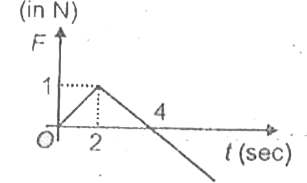The momentum of a particle is . The angle between momentum and the force acting on a body is Solution in Tamil
Step by step video, text & image solution for The momentum of a particle is vecP=costhetahati+sinthetahatj. The angle between momentum and the force acting on a body is by Physics experts to help you in doubts & scoring excellent marks in Class 11 exams.
Updated on:21/07/2023Topper's Solved these Questions
- KINEMATICSBOOK - FULL MARKSCHAPTER - KINEMATICSEXERCISE - ADDITIONAL QUESTIONS SOLVED (SHORT ANSWER QUESTIONS - 1 (2 MARKS))
20 Videos
- KINEMATICSBOOK - FULL MARKSCHAPTER - KINEMATICSEXERCISE - ADDITIONAL QUESTIONS SOLVED (NUMERICAL QUESTIONS)
42 Videos
- KINEMATICSBOOK - FULL MARKSCHAPTER - KINEMATICSEXERCISE - TEXTUAL QUESTIONS SOLVED (LONG ANSWER QUESTIONS)
14 Videos
- HEAT AND THERMODYNAMICSBOOK - FULL MARKSCHAPTER - HEAT AND THERMODYNAMICSEXERCISE - ADDITIONAL QUESTIONS SOLVED (Numerical Problems)
16 Videos
- KINETIC THEORY OF GASESBOOK - FULL MARKSCHAPTER - KINETIC THEORY OF GASESEXERCISE - Addtional Numerical Problems
10 Videos
Similar Questions
What are positive and negative acceleration in straight line motion?
View SolutionThe V-t graphs of two objects make angle 30∘ and 60∘ with the time axis. Find the ratio of their accelerations.
View SolutionExplain in detail the triangle law of addition.
View SolutionThe length of a metal wire is l1 when the tension in it is T1 and is l2 when the tension is T2. The natural length of the wire is:
View SolutionIf the rms speed of hydrogen molecules at 300K is1930ms−1. Then what is the rms speed of oxygen molecules at 1200K.
View SolutionA particle moves in the xy plane under the influence of a force such that its linear momentum is →P(t)=A[ˆicos(kt)−ˆjsin(kt)], where A and k are constants. The angle between the force and momentum is
View SolutionLinear momentum of an object can be expressed as vecP= (4 cos t)hati+( 4 sin t)hatj . Angle between the forces acting on the object and its linear momentum is :
View SolutionState the relation between the momentum of a body and the force acting on it.
View SolutionA constant force of 100 N acts on the body for 8 s for changing its momentum. The change of momentum of the body is ______ newton second.
View Solutionएक कण X-Y-तल में एक ऐसे बल के प्रभाव में चलता है कि कण का रेखीय संवेग →p(t)=A[ˆicos(kt)−ˆj(sinkt)] है, जहाँ A तथा k अचर है | बल तथा संवेग के बीच का कोण है :
View SolutionState the relation between the momentum and force acting on a body.
View Solutionयदि एक बिंदु कण पर कार्यरत दो बलों →P व →P के परिणामी बल का परिमाण ∣∣→P∣∣ है, तो दोनों बलों के बीच कोण होगा :
View Solutionकणों के निकाय के संवेग-परिवर्तन की दर, निकाय पर कार्यरत सभी बाह्य बलों के सदिश योग के बराबर होती है।
View SolutionForce acting on a body varies with time as shown below. If initial momentum of the body is →p, then the time taken by the body to retain its momentum →p again is

View SolutionA particle moves in the X-Y plane under the influence of a force such that its linear momentum is vecp(t) = A[(wedge)icos (kt) -(wedge) sin (kt)] where A and k are constants. The angle between the force and the momentum is:
View SolutionThe momentum of a particle is →P=cosθˆi+sinθˆj. The angle between momentum and the force acting on a body is
View Solution
